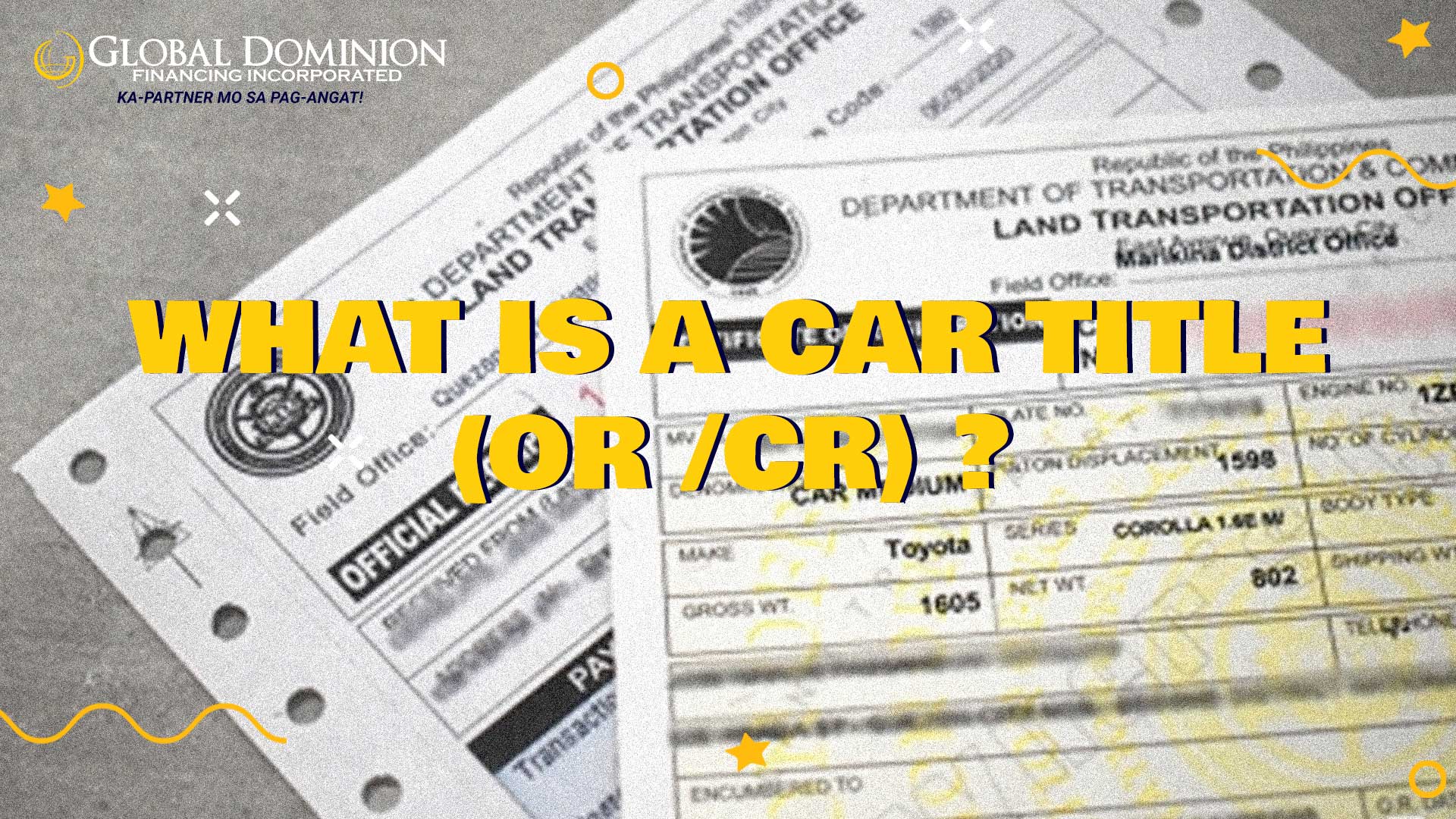What is a Car Title (OR/CR)?

Two of the most important documents for your car are the Official Receipt (OR) and Certificate of Registration (CR). These documents prove that you not only own the vehicle, but also that its registration is current. It contains confirmation of car ownership as well as other vital information, such as the vehicle identification number (VIN). A car title might be a physical document or an electronic document.
In most cases, the title will additionally include:
- Year, make, and model or body type of the vehicle
- Vehicle color
- Odometer reading
- Date on which the odometer reading was done
- Owner or owners of the vehicle
- Owner’s address
- Date on which the title was issued
A title number, the vehicle’s weight, the number of cylinders in the engine, the engine number, the kind of gasoline used in it, and the license plate number may all be included in the title.
How Does a Vehicle’s Title Work?
A car’s title certifies who owns it, which is crucial if:
- Your car has been taken.
- You wish to get rid of your automobile.
- Your vehicle has been seized.
- Before you possessed it or after you sold it, the car was used in a crime.
When you purchase a new automobile from a dealership, the title, registration, and license plate are usually always handled by the dealership. This service will be charged a fee, which should be stated as part of the purchase price.
You will have to undertake this process yourself if you acquire a car from a private owner.
If you have a car loan, the title certificate will most likely be maintained by the lender until the debt is paid off. The title is sometimes sent to the buyer who is already in possession of the vehicle, but the name of their lender will appear on the title.
Types of Car Titles
Clean, clear, salvage, and rebuilt are four words that may appear on a car title.
Clean
The vehicle has never been in a significant accident that caused an insurance company to declare it “totaled.”
Clear
There are no liens on the automobile, and the owner owns it outright.
Salvage
The car was ruled a total loss and no salvage was available. When a car is issued a salvage title, it is usually indicating that the car cannot be driven or sold in its current form.
Rebuilt or reconstituted
A title for a salvage car that has been rebuilt or reconstituted. The car may be in good condition, or it may have been restored on the cheap and may need further work in the future.
The first two are favorable descriptors, while the latter two should be avoided. A car with a rebuilt title, for example, may be affordable, but the cost of insurance is sometimes significantly more than a car with a clean title.
If you wish to acquire a car without a title, you should be aware of the numerous dangers and drawbacks. You must have insurance and proper registration in order to drive an automobile on public roads, and you must first get the vehicle’s title.
To learn more about car titles and how you can use them safely either to secure your vehicle or get cash during an emergency, visit GDFI, Inc.’s website at https://gdfi.com.ph/.





